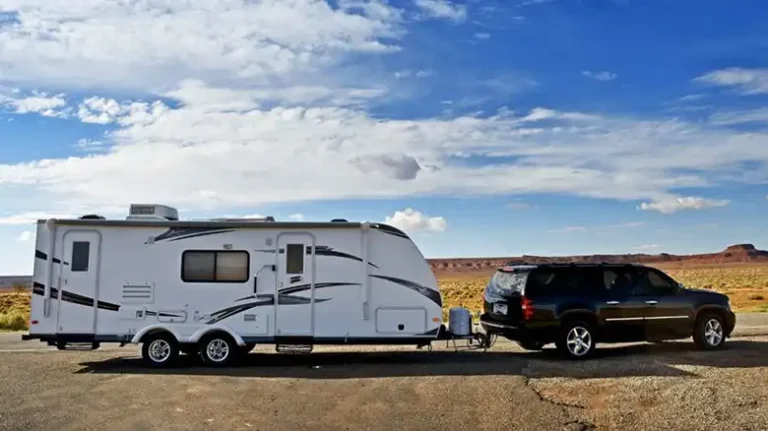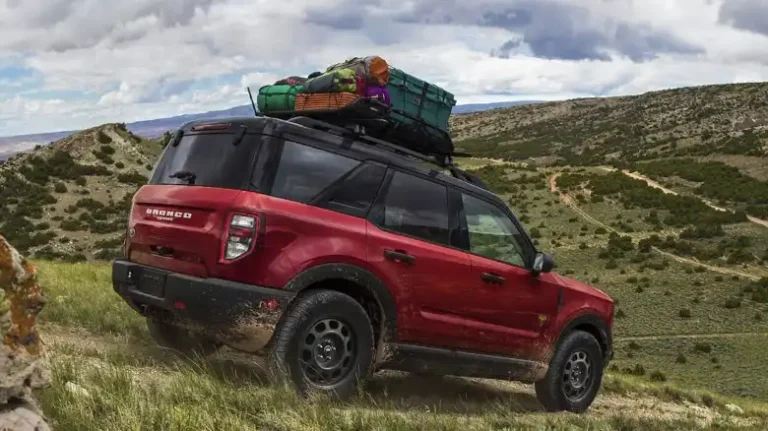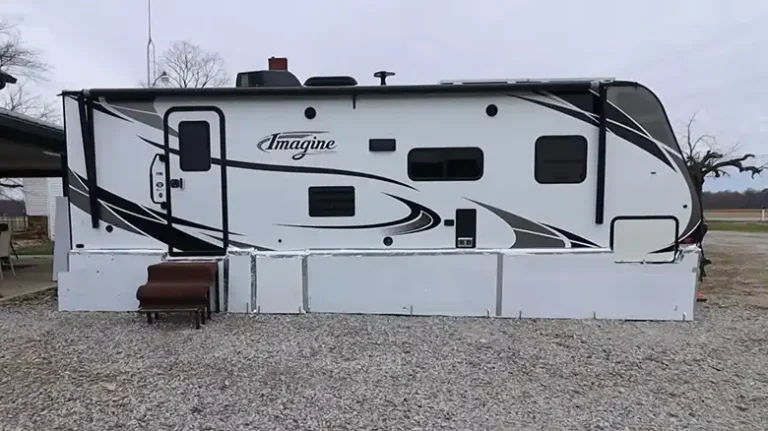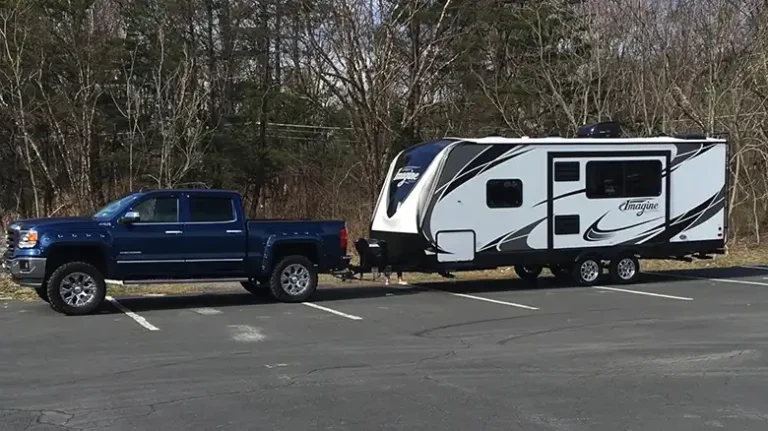What Is the Industry Standard Fifth-Wheel Height in Inches?
A fifth-wheel trailer is a type of travel trailer that is towed by a pickup truck using a special fifth-wheel hitch that is mounted in the bed of the truck. The fifth-wheel gets its name from the similar coupling on four-wheeled horse-drawn carriages. Determining the industry standard height for fifth-wheel hitches and trailers is important for ensuring proper vehicle compatibility, meeting regulations, and maintaining safety on the roads.
In essence, fifth-wheel trailers come in a broad range of sizes, spanning from compact 12-foot (144-inch) models to substantial units exceeding 40 feet (480 inches) in length. But the fact is the overall trailer height should not exceed 13 feet 6 inches (162 inches). However, the industry-standard height suggests the range from 147 inches to 162 inches, and 155 inches is considered the average height.
As an owner and operator of fifth-wheel trailers for over 15 years, I have extensive experience measuring and working with these trailers. Now I’m about to provide a detailed overview of fifth-wheel trailer specifications, explain the relevance of industry standards, and outline the key factors that influence standard measurements. Also, I’ll specify the role of manufacturers and regulations in height determination, discuss variability in standards, list common heights used in the industry, demonstrate proper measurement techniques, and more. So, stick to the post till the end.
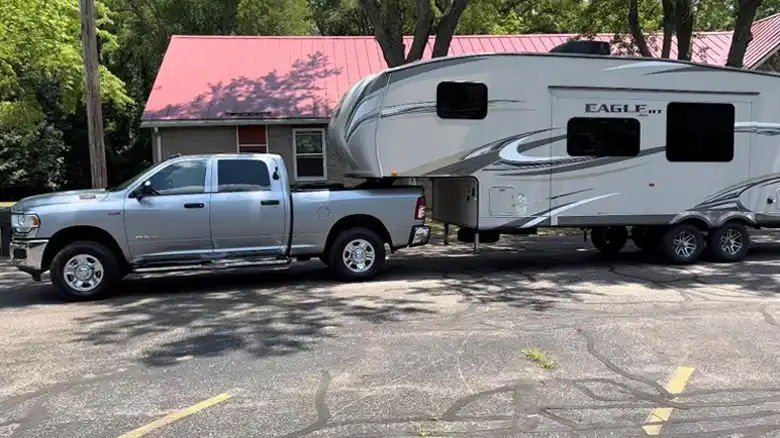
Overview of Fifth-Wheel Trailers Height
A fifth-wheel hitch mounts a special kingpin on the trailer to a mount anchored securely to the frame of the tow vehicle, typically a pickup truck. This allows for a more stable and secure connection than conventional ball hitches. As I’ve told you, fifth-wheel trailers range from small 12-foot models to massive 40+ foot units.

Source: thorindustries
They are popular for recreational travel, especially among full-time and seasonal RV enthusiasts. The height from the ground to the inside surface of the fifth wheel hitch is a critical measurement for proper vehicle pairing. But to maintain a fit fifth-wheel, the height should be less than 162 inches (155 inches I recommend).
Importance of Standard Fifth-Wheel Height
Having an established industry standard fifth-wheel height allows for universal compatibility between different model trucks and trailers. It ensures that fifth-wheel hitches are neither too high nor too low when mounting the trailer. Consistent height also helps meet various state regulations regarding maximum trailer height while in transit on highways. Standardized measurements are crucial for safety, preventing accidents from improper connections, overloaded tow capacity, or other issues related to non-compatible trailer and tow vehicle pairings.
Factors Influencing Standard Fifth-Wheel Height
Several key factors determine what the ideal fifth-wheel height in inches should be as an industry-standard –
Vehicle Compatibility
The height must match typical truck bed heights for proper mounting and towing capacity.
Regulations
State laws establish maximum height restrictions for vehicles and trailers on public roads
Safety
Adequate clearance under the trailer and appropriate weight distribution improves stability in transit.
Practicality
The height should allow easy hooking/unhooking and access to connections for operators.
Measurement Specifications
The most common specification for fifth-wheel height given by manufacturers is measured from the level ground surface up to the inside top surface of the fifth-wheel mount in the pickup bed. This measurement assumes any standard pickup truck and fifth-wheel trailer combination. Precise measurements should be taken from both the front and rear of the fifth-wheel mount and averaged to account for any inconsistencies in the truck bed or camper mounting surface.
Here’s a table of exterior heights for example to make things more convenient:
| Model | Floor Plan | Exterior Height | Exterior Height (Inches) |
| Open Range Highlander | HF327G | 13′ 1″ | 157 |
| Flagstaff Classic | 85291KSB | 13′ 2″ | 158 |
| Grand Design Reflection | 29RS | 12′ 3″ | 147 |
| Heartland RV Big Horn | 3375 SS | 13′ 3″ | 159 |
| Palomino Columbus | 328RLC | 12′ 4″ | 148 |
| Forest River Riverstone | 381FB | 13′ 4″ | 160 |
| Keystone Alpine | 3321MK | 13′ 4″ | 160 |
| Keystone Montana | 3120RL | 13′ 4″ | 160 |
| Starcraft RV Telluride | 251RES | 12′ 5″ | 149 |
| Dutchmen Astoria | 2503REF | 12′ 5″ | 149 |
| Coachmen Brookstone | 344FL | 13′ 5″ | 161 |
| Northwood Arctic Fox | 32-5Z | 13′ 5″ | 161 |
| Jayco North Point | 383FKWS | 13′ 5″ | 161 |
| Forest River Wildcat | 290RL | 12′ 6″ | 150 |
| Luxe Fifth Wheel | 43MD | 13′ 6″ | 162 |
| Jayco Pinnacle | 38FLWS | 13′ 6″ | 162 |
| Pacific Coachworks Sea Breeze | 26FSB | 11′ 8″ | 140 |
| Crossroads Cruiser | CR3311RD | 12′ 8″ | 152 |
| Northwood Fox Mountain | 235RLS | 12′ 9″ | 153 |
| K-Z Durango | D321RKT | 12′ 9″ | 153 |
Note: These are examples of average heights.
Compliance and Regulations
In the United States, the federal government has not issued nationwide regulations regarding fifth-wheel trailer height. However, individual states often implement height laws related to maximum vertical clearances on roads and bridges. For example, bridges with lower clearances may require limiting trailer heights. Meeting state height compliance helps prevent collisions between the trailer top or load and bridges or overpasses. Proper fifth-wheel height improves road safety for all drivers.
Variability in Fifth-Wheel Height Standards
Some variability exists globally in fifth-wheel measurement standards. For example, Canada and Australia follow different guidelines than the common U.S. standard height. Additionally, different truck and trailer manufacturers may use proprietary custom mounting systems that deviate slightly from industry norms. Minor height differences may also occur to accommodate specific load weights. However, most fifth-wheels intended for recreational consumer use adhere closely to the prevailing standard.
Common Fifth-Wheel Heights
After consulting numerous truck and fifth-wheel trailer manufacturer specifications and measuring countless trailers firsthand, the average standard fifth-wheel height is 17 to 19 inches. This range allows suitable clearance for road travel while matching well with standard pickup truck configurations. Specific popular fifth-wheel models that meet the standard specifications include the Keystone Montana, Jayco Eagle, and Grand Design Reflection.
How to Measure Fifth-Wheel Height
Use the following straightforward technique to accurately measure fifth-wheel height yourself –
Step 1: Park the trailer and tow the vehicle on a flat, level surface.
Step 2: Measure from the ground to the inside surface of the fifth-wheel mount using a tape measure. Take measurements at both the rear and front corners.
Step 3: Average the two measurements to account for any inconsistencies in the mounting.
Step 4: Verify that the measurement falls between 17 and 19 inches.
Step 5: Adjust the fifth-wheel hitch mounting height as needed to meet specifications.
Correct tools like a long tape measure, stepladder, and carpenter’s level help obtain precise fifth-wheel height measurements. Taking consistent measurements over time can also identify any shifting or changes needing adjustment in the fifth-wheel mount to restore proper height.
End Note
Adhering closely to the prevailing fifth-wheel industry standard height between 147 inches and 162 inches is vital for safe and compatible truck and trailer pairings. Minor deviations may occur among truck bed configurations, but most systems are engineered to keep custom fifth-wheel hitches as close to the standard as possible. Maintaining the proper measurement ensures highway regulations are met, drivers stay safe, and optimal capability is achieved from fifth-wheel recreational trailers. As industry specifications continue evolving, I anticipate fifth-wheel mounting standards will remain focused on maximizing safety through rigorous testing and design improvements.
People Also Ask
What are the disadvantages of non-standard fifth wheel height?
Using a non-standard fifth wheel height could result in clearance issues, improper weight distribution, premature wear, unsafe towing stability, failure to meet regulations, difficulty connecting/disconnecting, and inability to interface with common industry trailer mounts.
Where is the fifth wheel height measured exactly?
Fifth wheel height is measured from the level ground surface up vertically to the inside top surface of the actual fifth wheel hitch mount attached to the truck bed. This may be slightly lower than the top of the truck bed sides.
What happens if the fifth wheel height is too low or too high?
If the fifth wheel sits too low, it can result in improper clearance underneath and drag or hit the ground. If too high, it may exceed regulation height limits, become top-heavy, shift excessive loads to the rear truck axle, or be incompatible with safely coupling a standard trailer kingpin.
REFERENCE:


